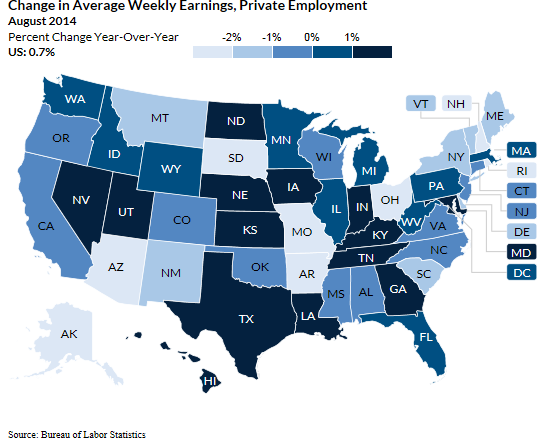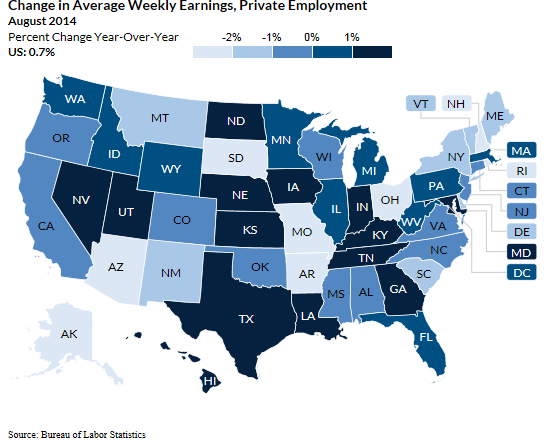The voices of Tax Policy Center's researchers and staff

Voters say the economy is the most important issue in the upcoming election. But as the most recent State Economic Monitor reports, the economy looks very different depending on what (and what state) you're analyzing. And polls suggest that voters faced with these mixed messages may focus on other issues when they choose governors in November.
The good news for incumbents is on employment. Every state but Alaska added jobs between August 2013 and August 2014, and the unemployment rate dropped in 45 states and the District of Columbia during that period. Jobless rates fell at least 1 percentage point in 25 states, with the biggest drops in Illinois (-2.5 percentage points), Nevada (-2.2 percentage points), Rhode Island (-1.9 percentage points), and Ohio (-1.8 percentage points).
Twenty-five states also reported August unemployment rates below 6 percent—up from just 14 a year earlier—but there were regional divides. Unemployment was generally low in the Midwest, but higher in parts of the West (Arizona, California, Nevada, and Oregon) and South (Georgia, Kentucky, Mississippi, and Tennessee), where jobless rates remained above 7 percent.
While many incumbents can crow about new jobs, challengers may point to stagnant pay as a sign of economic weakness. Over the past year, inflation-adjusted average weekly wages for private employees rose nationally by only 0.7 percent. And real wages fell in 26 states scattered across the country, including Arizona (-4.4 percentage points), Ohio (-2.8 percentage points), and New Hampshire (-2.7 percentage points).
 These divergent economic trends are resonating with voters. A September Pew Research poll found that while Americans' assessment of job opportunities had improved, 56 percent reported their family's income was falling behind the cost of living.
These divergent economic trends are resonating with voters. A September Pew Research poll found that while Americans' assessment of job opportunities had improved, 56 percent reported their family's income was falling behind the cost of living.
Even if Americans do vote their pocketbooks, it is hard to know how they'll respond to these mixed signals. And economic and political trends may not align in November.
There are clear economic winners and losers among the 36 states voting for governor this year. Six enjoyed both a drop in unemployment greater than 1 percentage point and positive wage growth over the past year. However, this group includes one state almost certain to bounce its incumbent governor (Pennsylvania), three states with toss-up races (Illinois, Massachusetts, and Michigan), and two that will most likely keep the controlling party in power (Idaho and Texas).
Meanwhile, six states (Alabama, Alaska, New Hampshire, New Mexico, South Dakota, and Vermont) saw little or no drop in unemployment and no wage growth over the past year. And in five of them, the incumbent governors (both Democrats and Republicans) are strong favorites for reelection. The one exception: Alaska, considered a toss-up.
The State Economic Monitor also examines the housing market, state government finances, and economic indexes compiled by the Federal Reserve Bank of Philadelphia. In addition to the report, you can examine state-level data (with historical trends) for each state with our interactive maps.
Posts and comments are solely the opinion of the author and not that of the Tax Policy Center, Urban Institute, or Brookings Institution.
